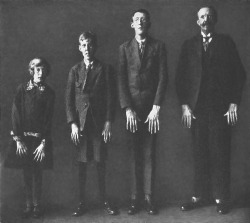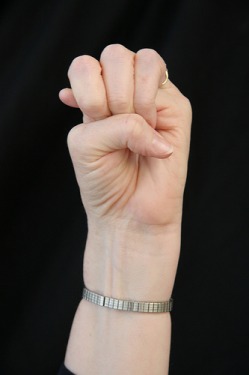This web page was produced as an assignment for Genetics 677, an Undergraduate course at UW-Madison
FBN-1 and Marfan Syndrome
WHAT IS MARFAN SYNDROME?

Photo showing arm span exceeding body height (2)
Marfan syndrome is a genetic disorder that affects connective tissue. Connective tissue comprises many important structures throughout the human body such as bones, muscles, ligaments, and blood. Affected individuals tend to be tall and slender with elongated fingers and toes. Their arm span usually exceeds their body height. Other common physical features can include unusual flexibility in joints, a long and narrow face, a highly arched roof of the mouth, crowded teeth, an abnormally curved spine, and a sunken in or protruding chest. About half of Marfan syndrome cases have vision problems due to a dislocated lens that can increase development of myopia, cataract and glaucoma. Most individuals are affected by abnormalities of the heart and blood vessels such as an enlarged aorta that can lead to aortic dilation or aneurysm, separation of the layers of the aorta can cause aortic dissection, and mitral valve prolapse can be fatal without proper treatment (1).
INHERITANCE

German family affected by Marfan Syndrome (1931) (3)
According to the National Marfan Foundation, Marfan Syndrome affects about 1 in 5,000 people, showing no particular prevalence in any gender, ethic group or geographical location. About 75% of cases are due to inheriting the mutation from a parent in an autosomal dominant pattern, meaning one copy of the mutated gene is sufficient to cause Marfan Syndrome. The other 25% of cases are due to spontaneous mutation (3).
GENE

Unusual flexibility in joints (4)
The Fibrillin-1 gene encodes a large extracellular matrix glycoprotein that in part of a structural complex that includes calcium-binding microfibrils. These microfibrils hold growth factors that keep them inactive. When released from the microfibrils, the growth factors are activated and affect growth and repair of tissue in the body. A mutation in the FBN1 gene can cause an increase of Transforming Growth Factor Beta (TGFB) protein. This increase results in changes in cadiovascular, skeletal, and ocular systems of the body. (1)
References
(1) Genetics Home Reference, U.S. National Library of Medicine
http://ghr.nlm.nih.gov/condition=marfansyndrome
(2) Photo courtesy of National Marfan Foundation
http://www.flickr.com/photos/nationalmarfanfoundation/3201919030/in/set-72157612643340384/
(2) Photo courtesy of
http://www.marfansyndrome.info/marfan-genetics.html
(3) National Marfan Foundation http://www.marfan.org
(4) Photo courtesy of National Marfan Foundation
http://www.flickr.com/photos/nationalmarfanfoundation/3201876502/in/set-72157612643340384/
(5) Photo courtesy of GeneCards http://www.genecards.org/cgi-bin/carddisp.pl?gene=Fbn1
The focus of this project is to further investigate and analyze the genomics and proteomics of the FBN1 gene and its effect on Marfan Syndrome.

